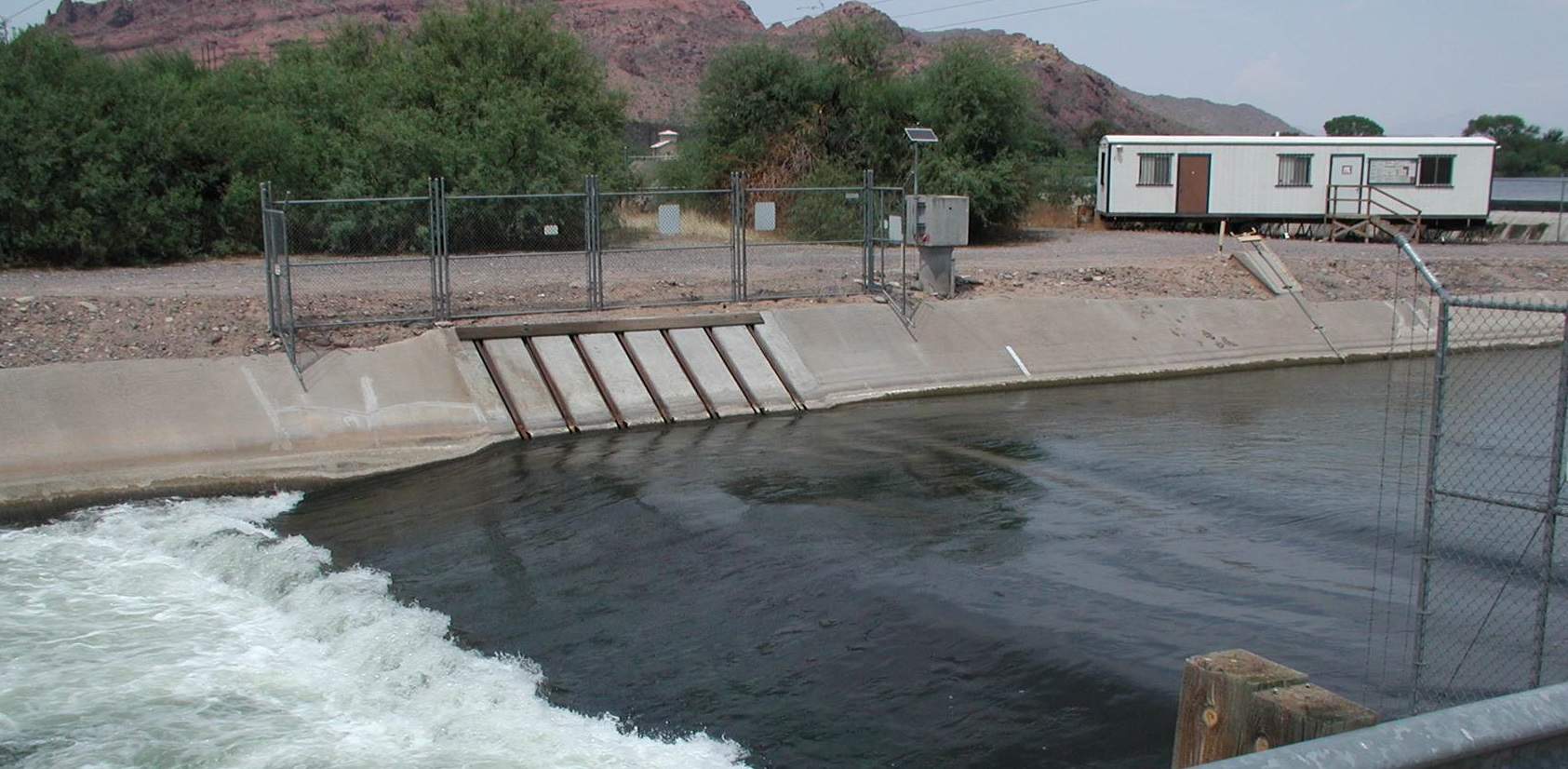Electrical Fish Barriers

Use of electric fields to prevent upstream movements of fishes was initially applied in North America in large scale sea lamprey control efforts in the Great Lakes in the 1950s. Electrical barriers were installed in streams considered inappropriate for drop barriers that served a similar function of preventing lamprey from accessing tributary streams used for spawning. Electrical barriers also have been applied to solve a wide variety of other fish control problems, including escapement estimation and prevention of entrainment.
Between 1988 and 1990, four electrical barriers were constructed on canals in central Arizona upstream from CAP interconnects. These electrical barriers are intended to prevent movements of nonnative fishes from the CAP canal into the Salt and Gila rivers via its distributary canals (Arizona Canal, South Canal, Florence-Casa Grande Canal). One electrical barrier was taken offline in 1992, but the other three have been in near constant operation since their construction. There are plans to decommission the electrical barrier in the Florence-Casa Grande Canal as an existing flume downstream will be replaced with a siphon structure. This new siphon structure will act as a physical fish barrier.
Electrical barriers function by electrifying the water column in a short section of the canal. As fish swim upstream toward the electrical field generated by the barrier, they either swim away (back downstream) when encountering the edge of the field, or continue upstream until the electricity overwhelms their ability to orient in the water current, and they drift downstream. In the event of a power failure, electricity is provided by a backup power generator.
Because they depend upon electricity, electrical barriers are not foolproof. Causes of barrier failures are usually due to AC power failures, often caused by line voltage fluctuations or lightning strikes. Human errors that arise from the complex operating systems of the barriers also have caused failures. Outages have usually been remedied by returns of primary electrical power, component replacement or repair, or changes to standard operating procedures.
What have been the biological consequences of the barrier outages? In several instances, fish common downstream from the barriers, but which had not previously been found upstream, were captured above the electrical barriers during annual fish monitoring. These fish have not yet been found in the rivers that feed the canals; however, the potential for escapement exists. If novel non-native species are able to invade the upstream river drainages, they have strong potential to negatively impact threatened or endangered native fishes, as well as established non-native sport fisheries. Although the complexity of electrical barrier systems may always prevent their absolute effectiveness, additional redundancy to system components has potential to significantly reduce occurrences of barrier failures. Management agencies must determine whether incorporation of additional redundancy is cost effective or not.
Reports:

